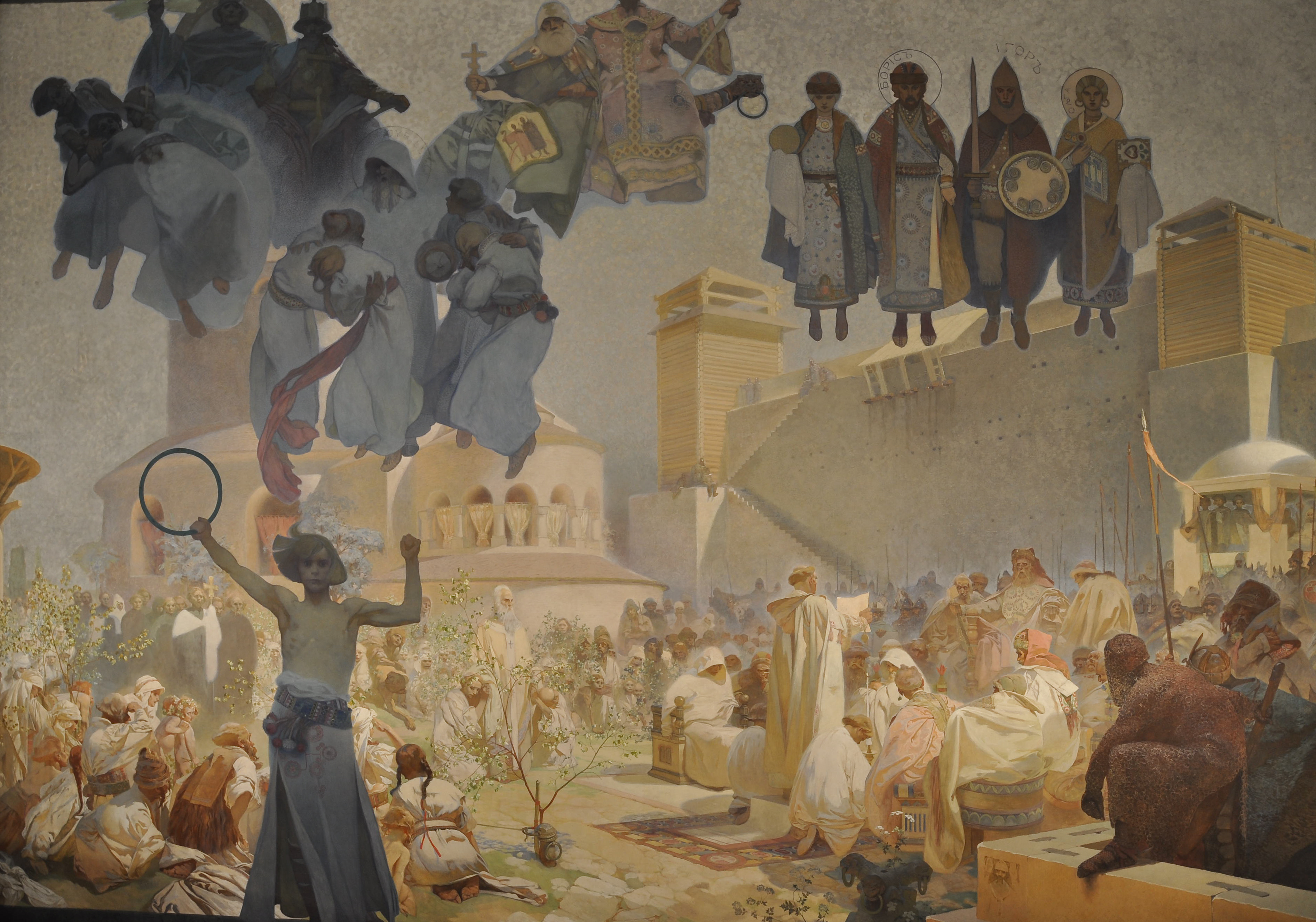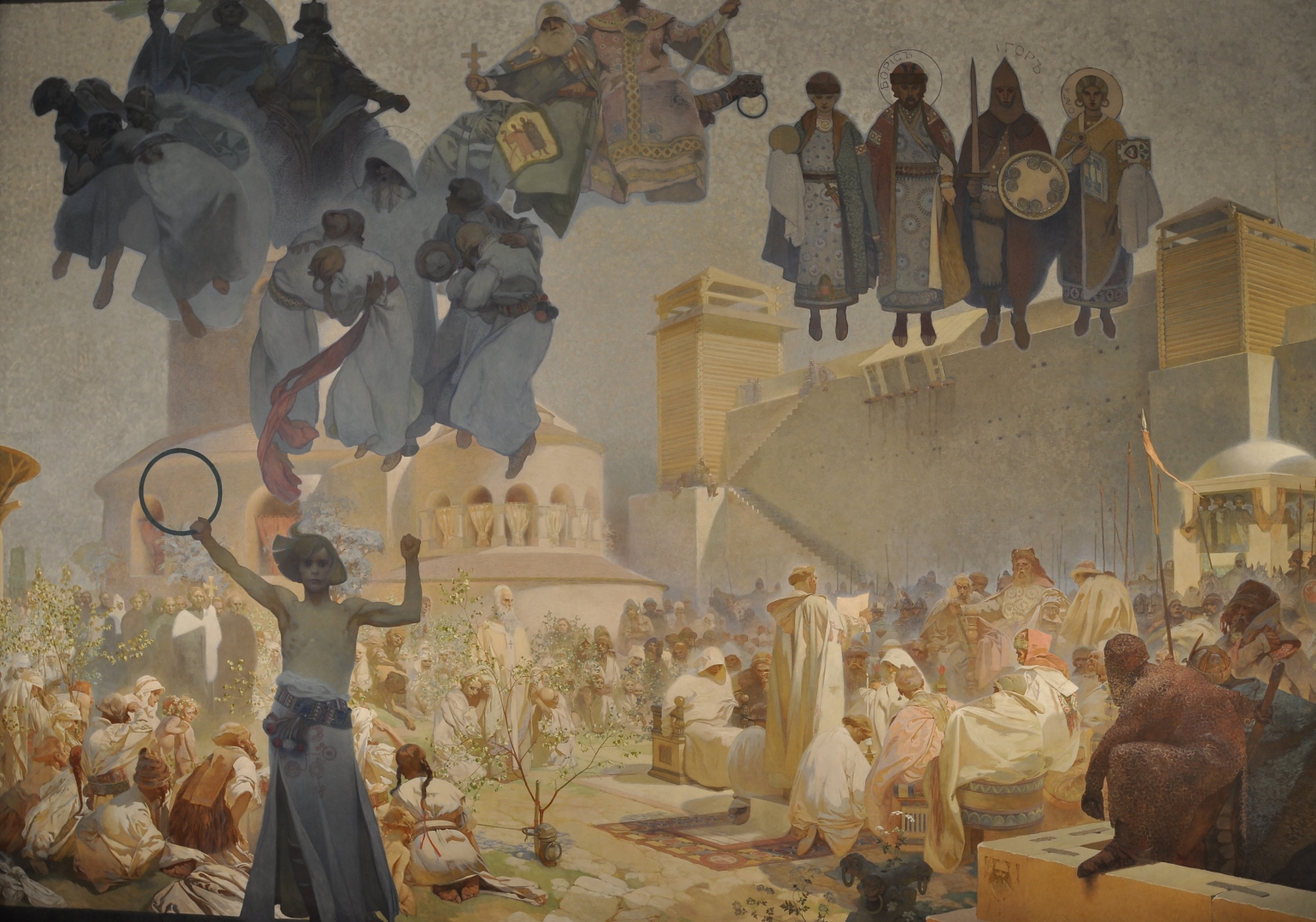THE INTRODUCTION OF THE SLAVONIC LITURGY AT GREAT MORAVIA
The Great Moravian Empire was not just a loose union of tribes but a close-knit state that successfully faced the onslaught of the Franks. However, the local church was subordinate to the Bavarian bishops, and Moravia's ruler, Prince Rastislav, understood that only establishing an independent church organisation would strengthen the country's position. In the years 860-861, he asked the Roman Pope Nicholas I for spiritual help. However, Pope refused his request. Rastislav turned to the Byzantine Emperor Michael III with a plea to send teachers to Moravia who would be capable of spreading the Christian faith in an understandable, i.e. Slavic, language.
In 863, the educated Constantine, who later took the name Cyril, and his brother Methodius arrived from Thessaloniki. They compiled a new script, the Glagolitic, and used it to translate the Gospels. The apostles selected able disciples, taught them the scriptures and worship in the Slavic language. Although Latin priests fought a fierce battle against these services, Methodius' consistency prevailed, and Old Slavonic became an equal ecclesiastical language in Great Moravia.
The painting represents the capital of Great Moravia: Velehrad. In the middle of the courtyard, Prince Svatopluk sits on a high stool, surrounded by his entourage, and bishops and nobles stand before him. The deacon reads a letter where the Pope appoints the new Archbishop, Methodius, who will be superordinate to Bishop Wiching, who resides in Nitra, and will be allowed to serve services in the Slavic language. The Frankish knights watch him humbly. The rotunda in the background was painted according to the church of St. George in Thessaloniki. In front of it, Methodius stands at the head of a procession of his disciples. In 880, he returned from his third trip to Rome. His brother Cyril entered a monastery there and was buried there.
The group of people at the top left symbolises the then violent spread of Christianity by the Franks. Dressed in a cowl, Cyril protects the Moravians from heaven at the bottom left. On the top right, Mucha used four figures to symbolise the liturgical connection of Great Moravia to Kievan Rus, St. Olga with her husband Igor, and to Greater Bulgaria, St. Boris with his wife. The two figures in the middle, sitting on a sword shaped like a ship, are the sons of St. Vladimir of Kyiv, Gleb and Boris, patrons of sailors and protectors of merchants. Mucha depicts Christianity as a metaphorical port to which all Slavic nations gradually arrived. The figure of a young man with a circle and a clenched fist represents strength and cohesion.

